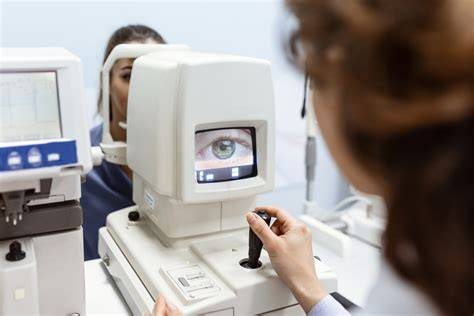Have you been thinking about adding a vision screener device to your practice? If the answer is yes, then you have undeniably taken the time to get a better idea about why it is so important and how it can help you enhance the quality of the services you are offering, as well as the quality of general patient care. So, it is no wonder that you want to get one.
Read about vision screening for babies and children, if you’re interested in learning about that: https://www.healthychildren.org/English/health-issues/conditions/eyes/Pages/Vision-Screenings.aspx
Now, while you do understand the importance of getting one of these devices for your practice, you may not exactly be sure about how to get a great one. And, that is a rather important question, because you absolutely don’t want to get a machine that you won’t be happy with afterwards. Instead, you want to get one that you will absolutely love, and that undeniably requires you to do some research beforehand, and to keep some important things in mind.
So, what we are going to do right now is share some tips that should help you choose a good vision screener for your practice. You will learn which steps to take, as well as what kinds of factors to take into account in order to be able to make the best choice. Without any further ado, thus, let us get started.
Think About What You Need First
It goes without saying that the first thing you have to do is think about the actual needs of your practice. If you’re running a pediatric clinic, for example, you may need to get a device with children-friendly features. Then, if you’re into the field of occupational health, you may need one that is portable, as well as one that assesses various things that are important for workplace safety, such as depth perception, peripheral vision, as well as color vision. These are just some examples, but the bottom line is that you need to assess your particular needs, so that you can find a device that will work for you perfectly.
Ask Around
Once you’ve identified your needs, you’ll be ready to proceed towards actually searching for these devices. And, the first thing to do is ask around, and check if the people around you may be able to share some recommendations. Talking to other optometrists, for example, could be a good idea, and it could help you Learn more about certain suppliers that offer these devices, as well as about the quality of those devices. The point is, though, that you should use this step to get familiar with different screeners and suppliers, after which you’ll need to do some more research.
Search Online
The next thing you should do, of course, is search for these machines and suppliers online. After all, most great suppliers will have their own, official, websites, allowing you to check out what they have to offer in more details. So, take your time to do these online searches to further expand your list of potential shops and potential vision screeners. Once you have a more comprehensive list, you’ll be ready to dig deeper and get some more relevant details.
Check All the Features
Naturally, one of the first things you will have to do when you make that list is check all the features of the specific devices that you are considering. This will help you determine if the features that are offered can meet your particular needs. So, you will eliminate any screeners that are not suitable for your particular practice, thus more easily narrowing down your choices.
Assess Patient Experience
Of course, you will also have to remember to assess patient experience. This is because you want to ensure that you are getting a device that will be accurate and precise, but that will also be comfortable for your patients, and provide them with a good overall experience. Naturally, hygiene plays an important part here as well, so check whether the device can be easily cleaned, and if you get disposable accessories, such as hygienic eye covers.
Assess Ease of Use
Apart from all of that, you also want the vision screener you get to be easy to use, so that your employees can immediately get the hang of it. Sure, they will already be familiar with various vision screening procedures, but the point is that you want them to learn how to use the specific device you get as quickly as possible. Therefore, always assess ease of use before making any choices.
Compare the Costs
Here’s one final thing to do. Compare the costs of the different devices sold by different suppliers. This is not because you want to get the cheapest option. Far from it. It is because you want to get the best quality vision screeners at fair prices, and that definitely means you should compare those prices, but while keeping in mind all the other important factors we have mentioned.









